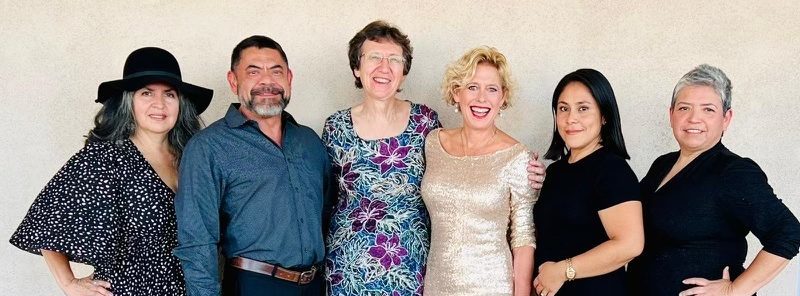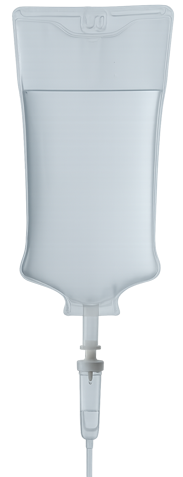Daniel Weber from Panaxea comments:
The below article suggests that the stress hormone Corticotropin Releasing Factor (CRF) promotes breast cancer cell motility and invasiveness. CRF stimulates breast cancer progression and may stimulate metastasis. Another reason to work with your BCa patients to help them de-stress and take up those activities that calm the mind and spirit.
Cancer cells secrete bioactive peptides that act in an autocrine or paracrine fashion affecting tumor growth and metastasis. Corticotropin-releasing factor (CRF), a hypothalamic neuropeptide that controls the response to stress, has been detected in breast cancer tissues and cell lines. CRF can affect breast cancer cells in an autocrine or paracrine manner via its production from innervating sympathetic neurons or immune cells.
Overall, the data from Androulidaki et al., (2009) suggests that CRF stimulates cell motility and invasiveness of breast cancer cells most probably via induction of FAK phosphorylation and actin filament reorganization and production of prostaglandins via Cox1. Based on these findings they postulate that the stress neuropeptide CRF present in the vicinity of tumors (either produced locally by the tumor cells themselves or by nearby normal cells or secreted from the innervations of surrounding tissues) may play an important role on breast tumor growth and metastatic capacity, providing a potential link between stress and tumor progression.
Source
Corticotropin Releasing Factor promotes breast cancer cell motility and invasiveness. Mol Cancer. 2009 Jun 2;8:30. doi: 10.1186/1476-4598-8-30.
Is Cancer Due to Bad Luck, Faulty Genes or Lifestyle Factors?
A study published in Science in early 2015 reported that most cancers arent preventable and are simply a case of bad luck. That study said some tissue types give rise to human cancers millions of times more often than other tissue types. Although this has been recognized for more than a century, it has never been explained. Tomasetti & Vogelstein (2015) show that the lifetime risk of cancers of many different types is strongly correlated (0.81) with the total number of divisions of the normal self-renewing cells maintaining that tissues homeostasis.
These results suggest that only a third of the variation in cancer risk among tissues is attributable to environmental factors or inherited predispositions. The majority is due to bad luck, that is, random mutations arising during DNA replication in normal, noncancerous stem cells. This is important not only for understanding the disease but also for designing strategies to limit the mortality it causes.
A year on, however, and a study published in Nature has come to the opposite conclusion: that external factors such as tobacco, sunlight and human papilloma virus play a greater part in whether or not a person gets cancer.
So what does cause cancer: bad luck, or avoidable lifestyle choices and environmental factors?
Why bad luck?
The bad luck study, by Tomasetti and Vogelstein from Johns Hopkins University, was based on two facts.
First, it is not the case that cancer is equally likely to occur in all the various organs and tissues of the body. Some cancers, such as colon cancer, are relatively common, while others, such as bone cancer, are much rarer for reasons that the study aimed to discover.
Second, various types of tissues have different numbers of dividing cells, called stem cells, which serve to replace cells that have become old or damaged. How often these divide varies depending on where in the body they are located and how often the cells need to be replaced.
According to one school of thought, cancer arises when stem cells go out of control.
Every time a cell divides in two, it needs to make an accurate copy of its entire DNA. This copying process is usually accurate but mistakes can occur leading to spontaneous random mutations in the new cells. When mutations occur in genes that keep cell division under control, their tumour-suppressing job is prevented. The result is cancer.
Tomasetti and Vogelstein proposed that every time a cell divides the random inaccuracy in DNA copying could result in a cancer-causing mutation. If individual cells divide more frequently, or if there are more cells dividing overall, then there is an increased chance of such mutations occurring.
They looked at the behaviour of stem cells from various tissues, and in particular the number of stem cells and how often they divide in a humans life. Based on how these numbers vary for different tissues, they inferred that the risk of developing a particular type of cancer was closely related to the number of times stem cells have divided in that tissue. This reflects the intrinsic risk that frequent DNA copying carries.
Why environment?
In the more recent study, researchers at Stony Brook University (SBU) in New York took another look at the data used by Tomasetti and Vogelstein. They noted that even when you take into account the total number of stem cell divisions, some cancers were still more likely to occur than others. More common cancers, they inferred, must have some additional external cause, such as the environment, lifestyle or genetic makeup.
When they re-analysed the data on this basis they found that for many cancers, including some of the most common ones, such as lung and liver cancers, less than 10% of the risk was traceable to random copying errors.
What to believe?
The two studies have some things in common but differ substantially in their estimates of how much intrinsic and extrinsic risks contribute to cancer. Notably, the SBU team have backed up their argument with evidence that wasnt included in Tomasetti and Vogelsteins study.
First of all, the SBU team highlight the vast array of evidence that points to a substantial contribution of environmental factors and lifestyle choices to cancer risk. For example, its well-known that colon cancer is comparatively rare in Japan but that Japanese immigrants in the USA and their descendants have an even higher risk of getting colon cancer than European Americans.
health concept – cloud of related words and topicsThe SBU team also looked at the types of mutations that various cancers carry. Some mutations are seen more often in tumours from older patients. This fits with the bad luck model, where the key factors behind cancer occurrence are the errors that accumulate each time a cell divides.
However, cancers also contain many other types of mutations that can occur because of specific carcinogens, for instance, the sunlight-triggered mutations in skin cancer. How often these cancer-causing changes occur depends much more on the amount of exposure a person has to carcinogens, rather than on age.
Finally, they also showed that the known error rate for copying DNA is not high enough to be the sole determinant for the risk of developing the cancers both teams examined.
Although we know what causes some types of cancer such as smoking causing lung cancer in many cases its more complicated than finding one simple cause. We are only just teasing apart many of the factors involved. While chance has a role in determining who gets cancer and who does not, its very clear that lifestyle, environment and our genes can change the odds considerably.
Sources
Allinson S. Oncology Network. Jan 12 2016 http://oncologynews.com.au/why-most-cancer-isnt-due-to-bad-luck/
Tomasetti C & Vogelstein B. Variation in cancer risk among tissues can be explained by the number of stem cell divisions. Science 02 Jan 2015: Vol. 347, Issue 6217, pp. 78-81 DOI: 10.1126/science.1260825






